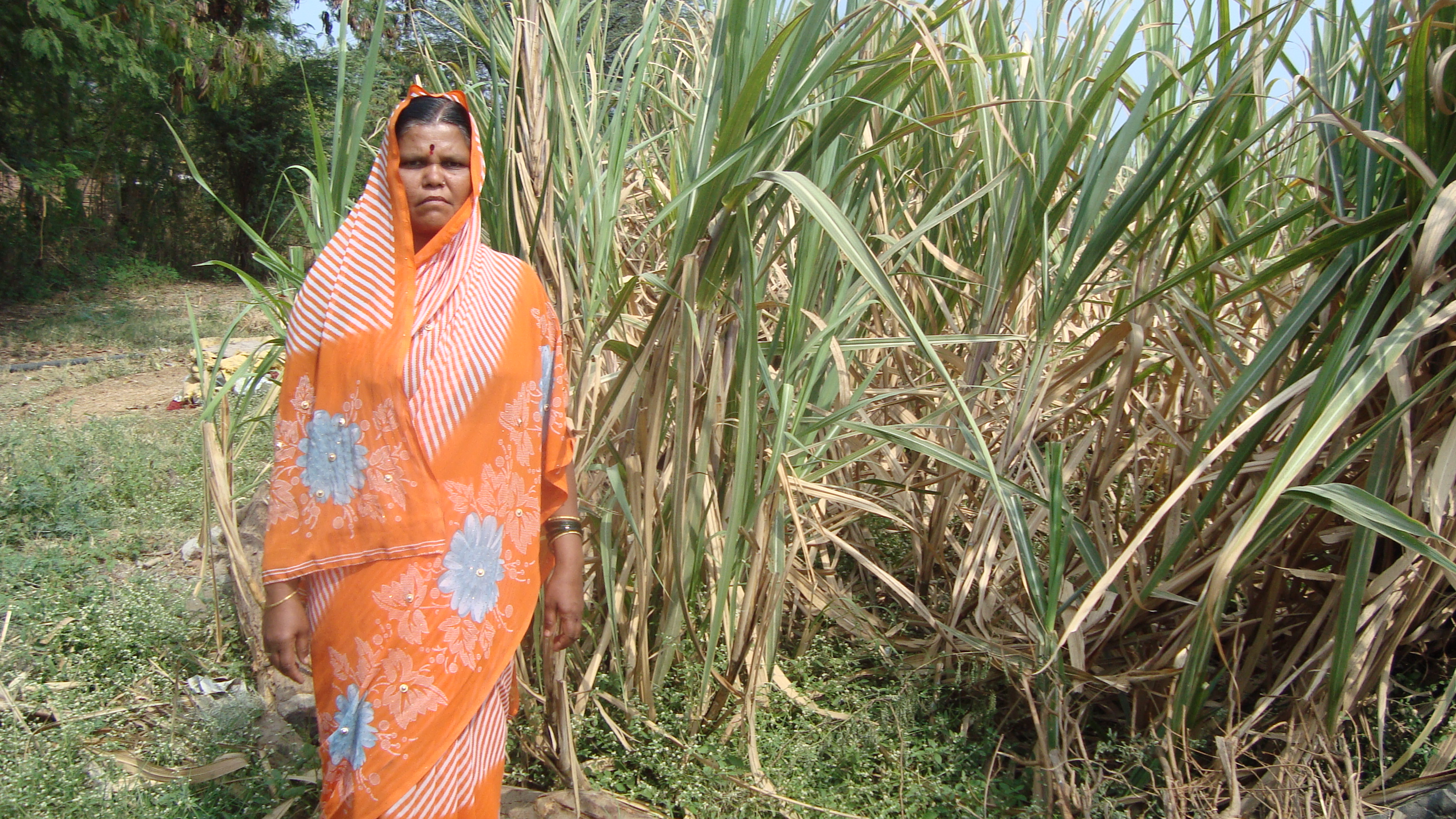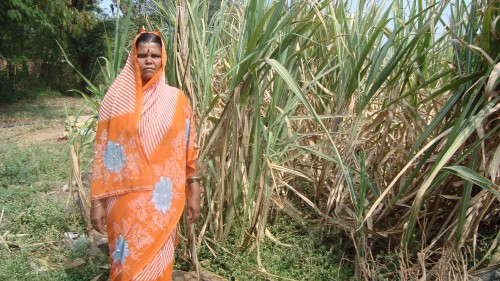The Sweet Taste Of Success for Indian Women Cane Farmers
Aurangabad (Women’s Feature Service) Laxmibai Shelke, 45, was skeptical when she heard that some farmers were experimenting with new methods of cultivation to boost their sugarcane production. But when yet

Aurangabad (Women’s Feature Service)

Laxmibai Shelke, 45, was skeptical when she heard that some farmers were experimenting with new methods of cultivation to boost their sugarcane production. But when yet another harvest saw a poor yield from her 10-acre land, the illiterate woman hailing from Bhidhanora village, situated about 45 kilometres from the Maharashtrian city of Aurangabad, knew it was time to discard conventional farming methods followed unquestioningly by her family for generations.
With some trepidation, this farmer decided to plant her stem cuttings in December, a full month later than what she normally did. She also increased the spacing between each cutting from a single foot to four feet. Another bold step was to switch from the traditional “dry” method in which the cuttings are planted in dry soil (as against wet soil) followed by irrigation. Finally, in what she describes as the most daring decision she’d ever taken, Laxmibai changed her irrigation technique by replacing the traditional “zig-zag”, or serpentine furrows, with straight ones.
The results were magical. Not only did she get a far superior yield, her water consumption went down drastically. “Earlier I used to get between 35-40 tonnes of cane per hectare, but this year by using the new methods, my production rose to about 60 tonnes per hectare,” says Laxmibai happily. “By adopting the furrow system of irrigation, I have also reduced my water usage by 50 per cent!” she adds.
Fellow sugarcane farmer Kantabai Chavan, 45, has a similar success story to narrate. “During the period October 2010 to March 2011, I produced 60 tonnes of cane per hectare on my two-acre plot by using new methods of cultivation”, she informs. “With conventional farming methods, my yield never exceeded 40 tonnes per acre. Also, the straight furrow technique has reduced my water consumption by more than 30 per cent,” observes Kantabai.
Laxmibai and Kantabai represent a new crop of farmers who are creating waves in sugarcane cultivation in Aurangabad district of Maharashtra, the second largest sugar-producing state in India after Uttar Pradesh. With assistance from an innovative project which focuses on best management practices (BMP), these farmers are enhancing the quality of their lives by improving their yields and profits. The best part is that they are doing this while reducing water wastage and over-reliance on pesticides leading to pollution and ill health.
The European Union (EU)-funded project – ‘Reducing the Impact of Water-intensive and Polluting Crops: Securing sustainable sources of freshwater to support the livelihoods of poor communities in the Godavari Basin’, was launched inAurangabadin 2007. So far, about 700 farmers including women in 12 villages of the district are benefiting from the project that is being facilitated by the Worldwide Fund for Nature –India(WWF –India). The objective is to promote a bouquet of best agricultural practices, including the improvement of planting techniques and integrated pest management practices.

Under the programme, farmers’ groups have been set up to train people from selected trial plots. “These farmers will then pass on their experiences to other community members,” says Sumit Roy, WWF –India’s Project Manager for Freshwater & Wetlands Programme.
A unique component of the project is the establishment of Women Open Schools in six villages. According to WWF– India data, women’s participation in almost all agricultural activities has increased, especially with the development of export-oriented irrigated farming, which is associated with a growing demand for female labour. But these women are paid less than men, and are generally overlooked in initiatives that tackle farmer livelihoods and sustainable practices. The women are largely responsible for family nutrition and health, but they are often illiterate and have little decision-making powers.
According toRoy, theWomenOpenSchoolaims to empower them and bring them into the social mainstream. This is being achieved by a holistic approach that not only educates women on BMP, but encompasses issues like safe drinking water, kitchen gardening for better nutrition and health, education for children and better household financial management.
Women like Nirmala Hivarde, 40, have learnt the importance of personal hygiene in promoting the family’s welfare. “I did not realise that a simple thing like covering and placing the pot of water away from the ground and out of reach of children’s dirty fingers would keep the family’s drinking water clean,” she confesses. “At the school, I have learnt the three important messages on personal hygiene – wash the hands with soap or ash after using the latrine, before cooking and before eating food,” she recites proudly.
Laxmibai learnt of the dangers posed by exposure to harmful pesticides. “The school has taught me how to use these substances carefully. Also, I make sure that my children do not play near the fields after I have sprayed them with pesticide,” she points out.
The time of sowing is crucial in sugarcane farming, yet prior to the project many farmers were not aware of right time to plant. “For most of us, the sowing time was anywhere between November 25 to February 26,” remembers Laxmibai. “Now we know that the best time for sowing is from December 3 to January 12. Also, I have observed in my field that by keeping a distance of four feet between each sapling, more air is given to the crop, which helps to improve its quality.”
The school has also given women like Kantabai the confidence to interact with other farmers. “I have learnt about BMP methods such as how to treat seeds, test the soil, and use different micronutrients in proper quantities for different varieties of sugarcane,” she states.
Changing the mindsets of farming communities that are reluctant to abandon the ways of their forefathers remains the biggest challenge. But farmers like Kantabai are slowly but surely spreading the message that change can bring sweet returns. Says she, “With the profits we made with our increased yield, my husband constructed a new house. We have also purchased a sprinkler system for our farm.”
This story made me
- 97
- 121
- 89
- 167
Tell Us More
We bring stories straight from the heart of India, to inspire millions and create a wave of impact. Our positive movement is growing bigger everyday, and we would love for you to join it.
Please contribute whatever you can, every little penny helps our team in bringing you more stories that support dreams and spread hope.



















